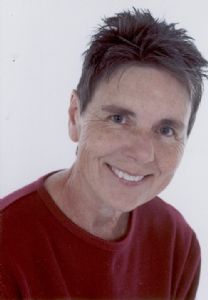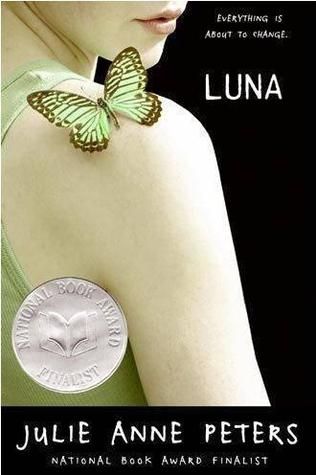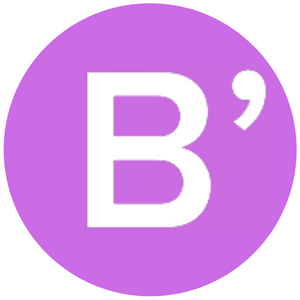 How did you come up with the idea for Luna?
How did you come up with the idea for Luna?One early morning, at 3:00 a.m., I had a visitation. She was a girl, sixteen or so, with shoulder-length blonde hair and bangs. Characters don’t usually come to me so vividly or fully formed. She said, “Write about me.”
I said, “No. Go away, whoever you are. You’re freaking me out.” I don’t believe in ghosts or spirits.
She was back the next night. She said, “Write about me.”
“No,” I told her. But since you’re here, who are you?”
She replied, “I’m Luna.”
I remember thinking, That would make a great title for a YA novel. But I wasn’t ready to start a new book. In February 2001, I’d just completed two novels without a break: Keeping You a Secret (a YA lesbian love story) and Between Mom and Jo. I was almost at the end of a third novel and my brain was mush. I’m a terrible insomniac anyway, and most of my work on a book is done in bed, lying awake, working through nuances in character and plot, dialogue, language, transitions. I fended Luna off for weeks and weeks. Finally, I just got so irritated with her waking me up at three a.m., ordering me to write about her, I sniped, “What? Write what? What’s your story?”
She smiled demurely, and said, “I’m transsexual.”
Whoa.
Why did you decide to write about transgender issues?
It wasn’t my idea. It was Luna’s.
What research did you have to do for Luna?
After my initial resistance (and I was resistant to writing this book; I didn't feel I could tell Luna’s story authentically), I began to research transsexualism. I knew zip, zero, zilch about being transgender or gender-variant. I should've known, but gender identity and sexual orientation are two different animals. Beyond case studies and psychology texts there’s a dearth of mainstream fiction dealing with the subject. After six months my knowledge of their lives only scratched the surface, and to write a novel I need to know my characters intimately, to get under their skin. I called the Gender Identity Center of Colorado and cried, “Help!” I asked if they could hook me up with a person who’d be willing to talk to me about growing up transgender. They invited me to a support group meeting.
To demonstrate the extent of my ignorance, I thought I’d be walking into a roomful of Ru Pauls. I’d be the most underdressed girl there. Stupid. They were just a group of ordinary people, in different stages of transition, gathering together to share their trials and triumphs.
I explained that I was working on this novel and asked if anyone was willing to sit down and share their story with me. Were they willing? They were desperate. Desperate for people to know and understand them. Almost every person in that room volunteered to help. Somehow word got out that I was doing this book and my e-mail box began to fill with letters from transgender people all over the U.S. who wanted to participate in the project.
The book was two years in the writing and revising. My agent, Wendy Schmalz, and my editor at Little, Brown, Megan Tingley, are both enlightened, progressive, and intrepid people and industry professionals. They embraced the book with enthusiasm.
Why did you write Luna from her sister Regan’s point of view rather than from her own? Also, who was Fred C. Martinez Jr (Beyoncé) and how did he inspire Luna?
About halfway through the novel, I abandoned the project altogether. I felt that fictionalizing the lives of these people was trivializing their struggle. The next day – it’s so weird to think back on this – an article appeared in the Rocky Mountain News about the brutal murder of a gay teen in Cortez, Colorado, Fred C. Martinez, Jr. As I was reading the testimonials from his friends, I realized Fred wasn’t gay. He was transgender. His life, his journey of self-discovery, had been denied him by an ignorant and violent society. I felt it was a sign that I should finish Luna; that it could serve as a way to educate people. I knew if the book ever came to publication, I’d dedicate it to Fred.
There were, in fact, literary challenges to pulling this thing off. The major one was my stubborn bias in favor of authentic voices in LGBTQI literature. I’m not trans. I never will be. My authenticity bias couldn’t be compromised. To be authentic and honest, the main character would need to act the role of invested observer. I decided to create a sister for Luna, Regan. Regan would be Luna’s confidante throughout life and in that way she could see, and relate to the reader, the childhood manifestations of being born transgender.
The challenge of exploring Luna’s childhood with flashbacks was a new writing experience for me. I’m always battling my own biases. I’m not a huge fan of flashbacks in novels, since they tend to pull readers out of the central storyline. Too often flashbacks are a lazy way for the writer to fill in backstory. But in the writing process, as I was recreating Luna’s past, my subconscious writer kicked in and switched the narrative from past to present tense. Yikes. I didn’t know if that had ever been done before. Young adult literature is all about experimentation and risk-taking. There are no rules, no limitations, no literary expectations to overcome. I liked the immediacy of reliving Luna and Regan’s childhood in the present. It gave the reader (and writer) a feeling of being there.
 What do you hope readers get from reading Luna?
What do you hope readers get from reading Luna?A balance between entertainment and education. I hope the story transcends the whole “difference and diversity” theme while speaking to the power of unconditional love.
You have written a number of LGBTQ novels and short stories for various identifiers including lesbian, transgender, and genderfluid. It was only when reading Passengers in Grl2grl did I first come across the term genderfluid. Is it important to you to give voice to those people in your stories that readers may not know of otherwise? (Please excuse me if the word “indentifiers” is not the correct word to use.)
Terminology is constantly changing. I’m always screaming, “Wait! Hold on. I’ve never heard that phrase before.” And if I use it, will a majority of readers understand what I’m talking about? It drives me crazy.
It's not a top priority. All I want to do, ever, is to tell a good story.
Whilst reading Grl2grl, I was reminded of how different people can be and of the different experiences they have, both in general and in the LGBTQ community. Was it your intent to highlight the uniqueness of individual lives through your short story collection?
My intent was to tell good stories that might provoke thought or hit home with readers.
You have also written Between Mom and Jo, a story about a boy brought up by same sex parents, taking the LGBTQ theme of a number of your novels in another direction.
Between Mom and Jo was ten years in the developing and writing. I didn’t want it to be just about same-sex parenting or adoption. My purpose was to tell a story about a boy, a sort of “any child,” caught in the crosshairs of divorce. Since I was a child of divorce myself, I knew what it felt like to be tugged in two directions by the parents you love. From the beginning, I’d planned for Nick to have two moms so that the story would be more unique and original, but I wanted Nick to experience all the emotions of a family torn apart.
The first LGBTQ book you had published was Keeping You a Secret. Did you encounter any difficulties finding a publisher due to Holland and Cece’s sexuality?
It was never my intent to become the poster girl for lesbian literature. In fact, it was my editor at Little, Brown who pushed me in that direction. We were having a late lunch one day at a conference in California. (This may have been the first time we’d met in person. Over the 12 years we’d worked together, our communications were always via phone, email or snail mail.) Megan turned to me casually and said, “Why don’t you write me a young adult lesbian love story?”
My mouth dropped open and a French fry fell onto her plate. “Are you insane?” I said. “Are you mad, woman?”
She didn’t understand my hesitation. But then, why would she? She lived in New York and I live in Colorado. This was two years after Matthew Shepard had been murdered. Amendment Two had recently passed in our state, virtually stripping gay people of their civil rights. (The Amendment was later overturned in the U.S. Supreme Court for being unconstitutional.) But the political and social climate here was extremely hostile.
I told Megan no, absolutely not. No, no, no, no, no. I had all these fears:
- I’d been working for ten years as a children’s writer and I thought, If I do a lesbian
- love story, all my books will be banned.
- I’ll be blacklisted in every school and public library in the country. At the time, a fair amount of my income was made doing school visits and I knew that money would dry up fast.
- I was out to my friends and family, but there’s a big difference being out (small caps) and being OUT. A global outing of this magnitude would impact my family.
- I’d be labeled as a “gay” writer, and limited in what I could do artistically—outside the closet, as it were. My community would expect more queer literature from me, and for good reason. There weren’t many authors brave enough to out themselves in mainstream literature.
- Gay literature was such a small niche market, and lesbian literature even smaller, I knew I’d never be able to make a living as a writer.
- My worst fear was that I’d get hate mail. I just hate being hated.
What is your opinion on how YA novels of today deal with LGBTQ themes?
The ones I’ve read are honest and authentic, even funny without making fun of gay teens. I like how authors are bridging genres to populate novels with gay characters.
Were there any books you found dealt well with this topic when you were a teen?
No. By the time I figured out I was a lesbian, I was 22 and in college. The only book I ever found was Nancy Garden’s, Annie on My Mind.
Are there any YA novels featuring transgender characters that you would recommend?
I enjoyed Parrotfish by Ellen Wittlinger. I am J by Cris Beam. Others can be found at the Rainbow List
What are you working on at the moment?
A YA novel titled, Lies My Girlfriend Told Me. It’ll be released in spring 2014.
Thank you, Julie, for such a fantastic interview, and for going into such depth with your answers! Be sure to check out Julie's website, and you can read my review of Luna here and my review of Grl2grl here.









0 comments:
Post a Comment